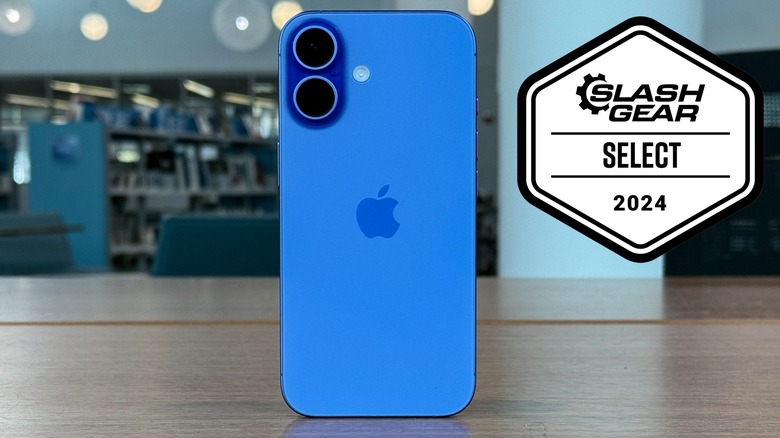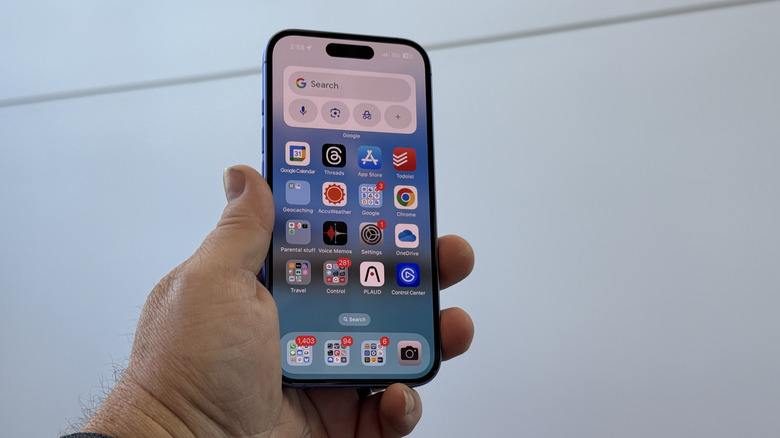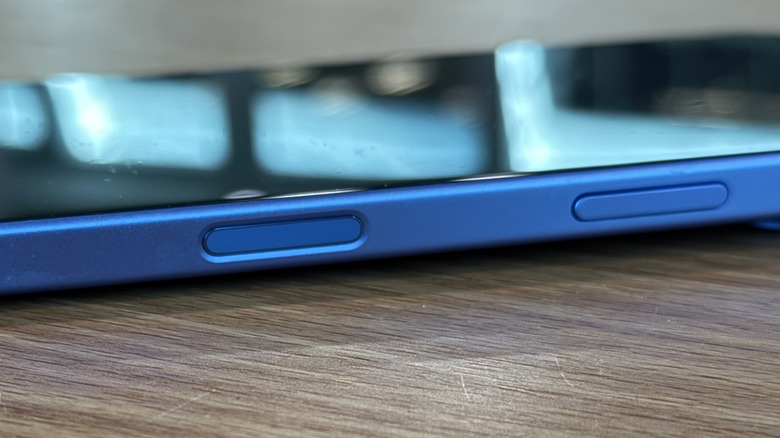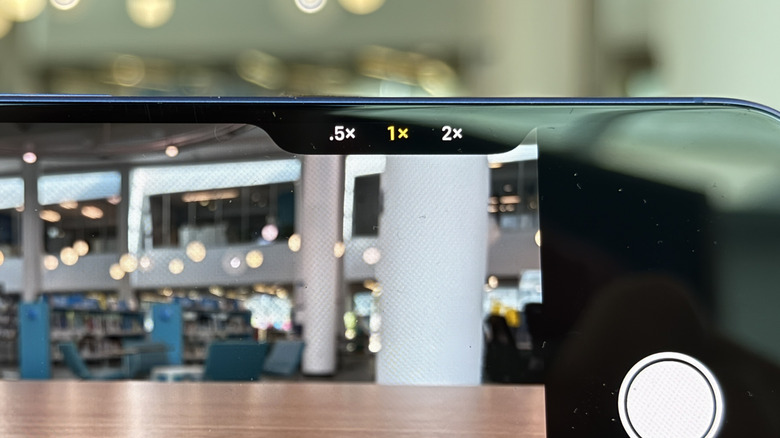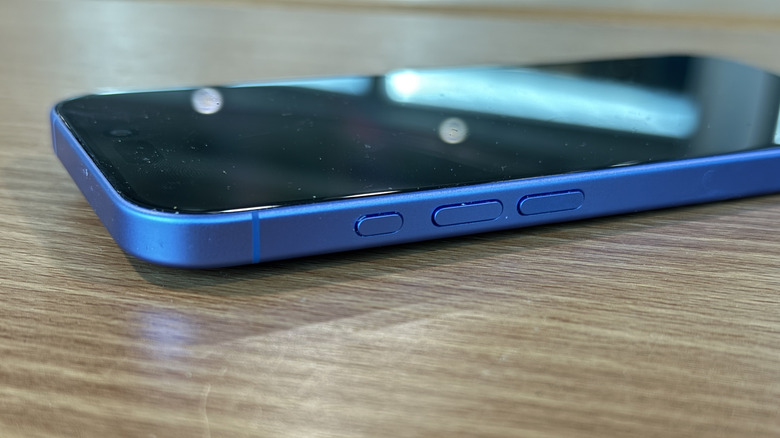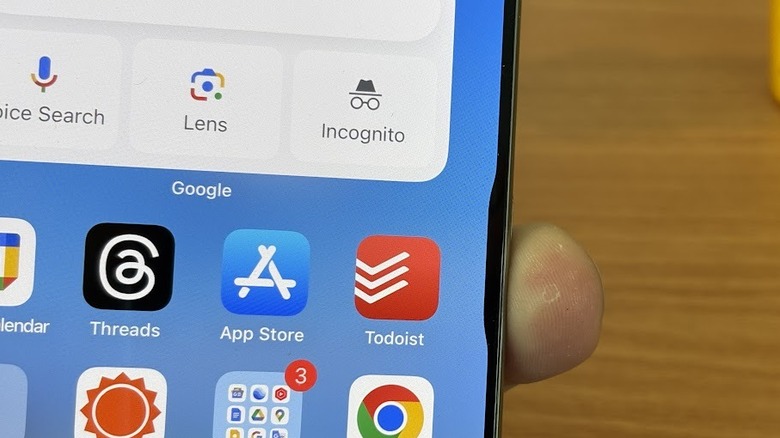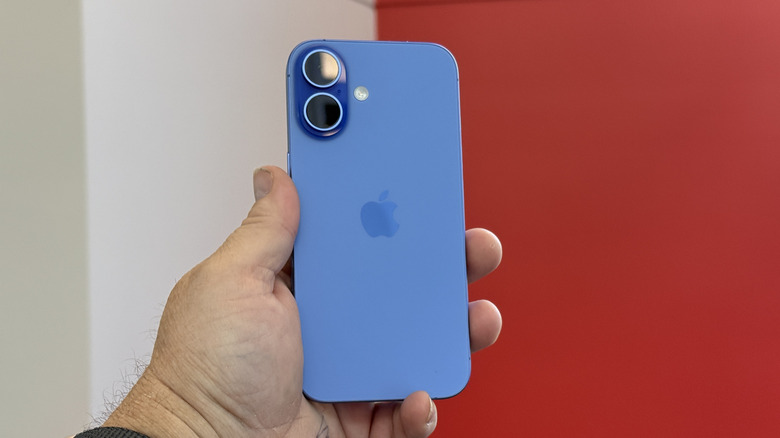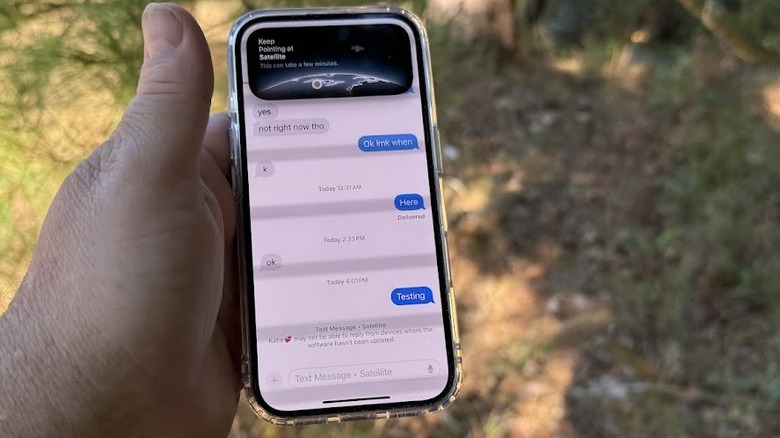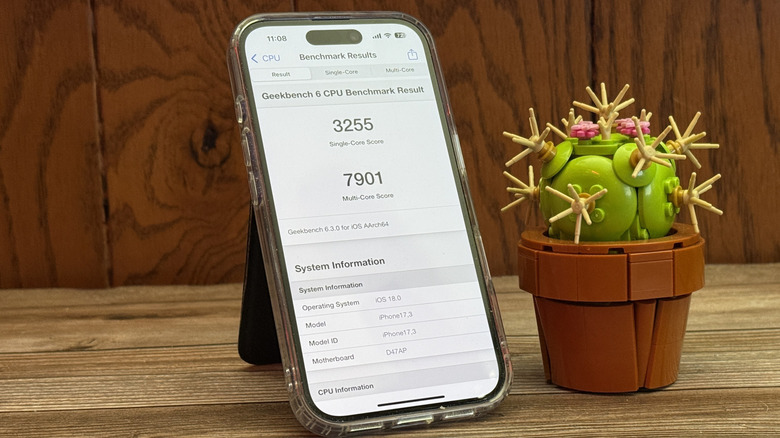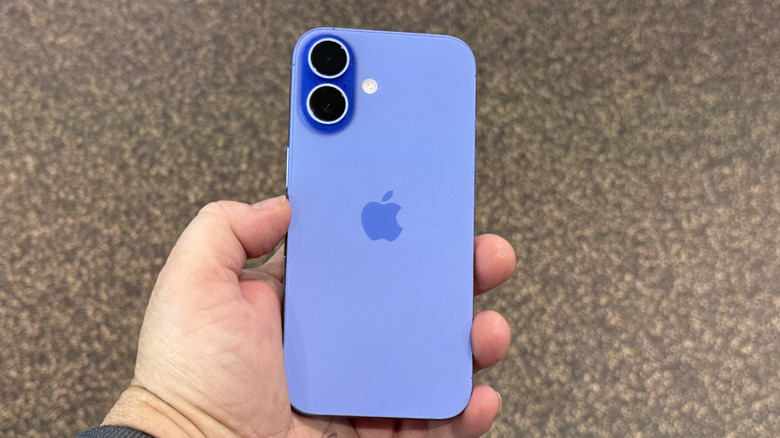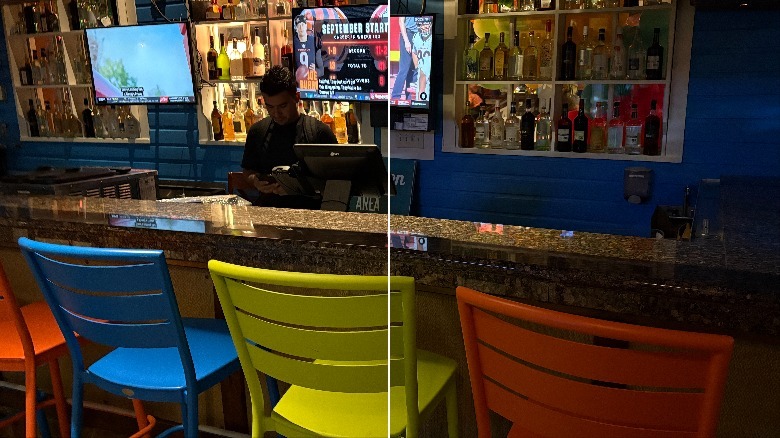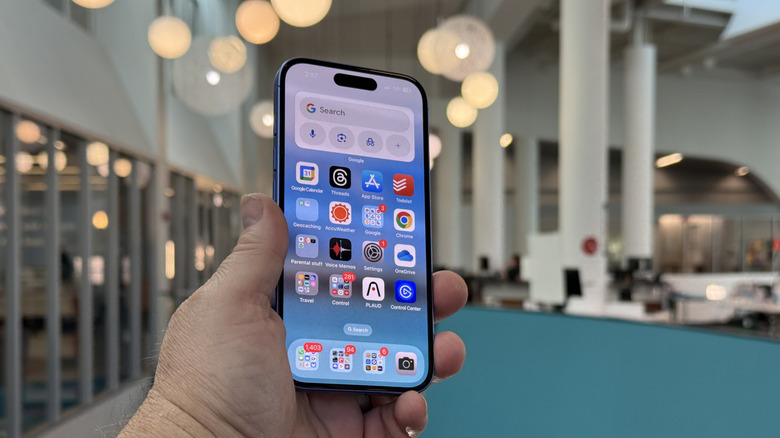iPhone 16 Review: Closer To Pro Than You Think
- Action Button
- Camera Control
- Much faster processor
- Small but impactful software tweaks
- Halo feature (Apple Intelligence) hasn’t shipped yet
- Cameras are just ok
We may receive a commission on purchases made from links.
For years now I've always owned some version of the latest-in-line iPhone Pro. In order to write intelligently about the product that over half the United States uses, I need to use it and understand it. I've always used the Pro model because it represented the best of what Apple had to offer, and that's what I wanted to know about. If I wanted the full collection of features on the most capable piece of hardware, I got the Pro model.
This year is different. The iPhone 16 and 16 Plus have both caught up to the pro models in most meaningful ways. Dynamic island? Check. Action button? Bingo. Camera Control? You betcha. The only things missing from the not-pro iPhone are Always on Display and a telephoto camera — mostly (more on that later). So, I figured it was time to give the not-pro iPhone model a shot. Almost everything you want from and iPhone 16 Pro, you can find in an iPhone 16, so in my humble opinion, its time has come. I've been using the iPhone 16 for just over a week, and this is my full review.
Hardware upgrades across the board
When you consider how many ways there are to upgrade a phone, it's pretty remarkable that Apple touched on basically all of them. Never mind the two additional buttons that Apple added to the phone — Apple upped the ante on just about everything else. The battery is bigger. It has more RAM. It upgraded the processor by two generations. Apple made the phone lighter — yes, it is only 1 gram lighter, but that still counts!
Apple even made MagSafe charging faster by adopting the Qi2 standard. Now the iPhone can wirelessly charge at 25W rather than 15W. Apple did all that while keeping the same price from one generation to the next, unlike more than one other company releasing phones each year with prices creeping ever-higher.
This is more than just an iterative update. Apple brought real value to its most basic offering this fall, and that's enough to get anyone excited.
Stay in Control
Speaking of those extra buttons, the iPhone 16 and iPhone 16 Plus both gain the same new feature as the iPhone 16 Pro and iPhone 16 Pro Max. Camera control is a new button that Apple added to all four iPhones which is geared toward creators, and it's important to note that when I say "creators" I don't mean that with a capital "C." Anyone who regularly snaps photos and shoots videos falls into the "creator" category, and let's face it — that's mostly everyone.
Semantics aside, Camera Control is a capacitive button that recognizes taps, slides, half-presses and full presses of the button, and every one of those does something different. The key benefit to Camera Control is you can just press the button to launch the camera. This is something many phones have done over the years, and it's always welcome. I found myself using Camera Control to launch the camera basically any time I wanted to take a photo.
Switching Lenses
Camera Control can get into some of the finer controls of the camera. It works either in portrait or landscape orientation, but it works much better in the latter. If you put some pressure on the button (without actually depressing it) you can start adjusting the selected control — I have mine set to camera lenses, switching between ultrawide, main, and zoom. If you double half-press, you open and can scroll between the various controls themselves. For example, you can switch from adjusting the zoom level to the depth of field settings, etc.
To move between those settings, you slide your finger across the button. It can be a little inexact at times. When I began using the Camera Control, I had it set to adjust the zoom level, and switching between 1x and 2x with all the other levels in between (1.1x – 1.9x) could get a little tricky, which is why I was glad to find that I had the option of simply switching between sensors.
It's worth mentioning that most phone cases — including the one I used the most — have a cutout for this button. Spigen sent me its Ultrahybrid T case for the iPhone 16 Pro Max which adds a capacitive button of its own to the case. The cutout for the Camera Control lacks the level of precision that I wanted to get the button to work. Spigen's case makes a big difference. It's an easy recommendation, but unfortunately, it's only available for the Pro and Pro Max.
Action, not words
Also new to the non-pro versions of the iPhone is the Action button. This is the same button that came on the iPhone 15 Pro and iPhone 15 Pro Max last year, but it has a few new tricks up its sleeve. Like last year, you can program the Action button to do just about anything you want, and the whole thing is set by a nifty navigation UI that is unlike anything else in the operating system.
This year, the Action button gets some neat customizations which allow you to change the function of the Action button based on your focus mode. I don't use focus modes much because I get severe FOMO when I switch into a work focus, but I use bedtime mode, so that could be handy if I wanted a flashlight overnight and something else during the day. Again, you need to build a shortcut to do it, so it's not terribly convenient. I would prefer it if Apple would just allow you to set an Action button in Focus mode setup, or just have it remember your Action button preference when you set it up in a Focus mode. Whatever the case, you can do it, but it's not as easy as I'd like it to be.
Software touches
Apple also added some new software tweaks, such as the side of the screen bubbling in when you press any of the myriad of buttons surrounding the phone. It's a very subtle action, but I've grown to like it quite a bit.
You can also — finally — place icons anywhere you want on the home screen. Gone are the days of trying to move an icon somewhere on the screen that's completely empty only to have it snap back to the last available slot on the home screen. That was really maddening, and it only took until iOS was old enough to vote to get it.
You can also customize the Control Center quite a bit more, even adding support for third party developers, should you so choose. There's also a power button at the top of the control center, so you can shut your phone down when you want to do so without accidentally taking a screenshot.
One thing that is still missing (and I will never stop complaining about this until I get it) is a number row in the keyboard. It is 2024, and passwords are required to be more complicated than ever, and Apple still has not put a number row on the keyboard. It's the most ridiculous oversight in the history of technology — a history which also includes such events as HP buying Palm and the existence of Quibi.
The missing link
Of course, much of what Apple showed off at its fall event revolved around Apple Intelligence. That's not something I could review because it's not out yet, except in beta software. It's uncharacteristic of Apple to deliver a final product with so big a piece missing, but here we are.
Apple Intelligence adds AI to your phone in some useful and commonplace ways. It can give you a brief summary of your notifications, which can sometimes be hilarious, but also helpful. It can also help you write emails and notes using generative AI For example, you can change the tone of what you're writing to make it sound more professional. All that is nice, but it's not here yet.
We can take a deeper look at Apple Intelligence once it ships, but our editorial policy states we review products as they are delivered to us, not based on what they might do tomorrow. So, we will judge it when it arrives.
One more update
Two years ago, Apple introduced emergency SOS satellite communication for the iPhone. This is a critical service available to those who don't have any service. If you're out of range for cellular calls, you can connect to a satellite in order to contact emergency services.
This year, Apple opened things up to messaging many of your contacts with text messages. It's a little bit more "wish you were here" friendly, which is a nice feature. As Qualcomm pointed out when it introduced Snapdragon Satellite (it has since been killed off, but we don't talk about that part) 85% of the world doesn't have cellular coverage. As luck would have it, I found myself in part of that 85% during my review period, so I was able to take it for a spin.
The service is ridiculously intuitive to use, but also extremely slow. I tried messaging my daughter for about ten minutes, and the message never quite got sent. It's worth noting that I was under tree cover, without an adequate view of the sky. Had I been in an emergency situation, I would have tried much harder – And yet — if I were to find myself in an emergency situation, how likely would it be that I would have the option to better position myself in order to get a clear line of signal to a satellite?
So, my review of the satellite service would be best described as "neat, intuitive, didn't work terribly well for the moment."
Performance and battery
As for performance, the iPhone got a two-generation upgrade to its processor, going from the A16 bionic processor to an A18. Both are ridiculously fast processors, but the A18 is also more efficient. As for Geekbench scores, the A18 clocks in at 3,255 and 7,901 single/multi-core scores. The iPhone 16 is crazy fast, and games like "Call of Duty: Mobile," "Genshin Impact," and "Resident Evil: Village" all play very smoothly, with no dropped frames or lag.
As for battery life, this is a solid day-long phone. On my hardest day which involved a visit to my local amusement park, most of the day off Wi-Fi, and photo and video samples galore, the phone clocked in at 15% at the end of the day. That's not bad, but not among the greatest battery life I've seen. It's probably a good thing that Always-on display is not available on this phone, because I doubt it would survive a day like this with an AOD.
All the same, on a normal day, sitting on Wi-Fi most of the time, the battery was able to last all day with ease. If you venture away from Wi-Fi, you might want to toss a MagSafe battery in your bag.
Button or screen?
When it comes to the cameras, Apple made a physical change this time around. Rather than the diagonal orientation from years past, these two cameras are aligned. Apple says this is for better capture of spatial imagery. There's a 48-megapixel main sensor and a 12-megapixel ultrawide sensor. You can snap photographs using either the on-screen shutter button, or by fully depressing the Camera Control.
I tested every single one of my test shots using both methods. In particular I wanted to test how depressing the button might shake the camera. In years past, when there has been a dedicated shutter button on a phone, I have found that the force required to press the button tended to shake the camera the last instant, often blurring photos. So, I wanted to test to see what Apple could do with it. I said when I started reviewing the phone, that I wanted to see if Apple had solved this problem, and I suspected it had.
I was correct. I took hundreds of sample shots first cycling through each lens with the on-screen shutter, followed by pressing the Camera Control. In the shot above, the left side was taken with the on-screen shutter, and the right was taken with the Camera Control button. Some shots were fine; others were not, but there was no consistency in quality (or lack thereof) between the shutter and the Camera Control. What that leads me to conclude is it doesn't matter which you use. If your photos turn out not good, it's not because of the button you used to captured it.
It depends on the light
The iPhone 16 camera set is capable of very nice shots, often by just whipping out the phone and snapping a shot. The quality is directly proportional with the lighting conditions. As lights begin to dim, you start to see more grain in the darker areas, and even some reflective artifacts in your shots. Broad daylight shots will be better than indoor shot, which will in turn be better than nighttime shots. That's typical fare for smartphone cameras — the iPhone 16 is not special.
When your subjects aren't moving, you will get dramatically better shots during the day and at night. During the day, even a shot of a moving roller coaster turns out very good; at night, someone waving their hand or walking around gets very fuzzy, very fast. Again, this is pretty standard for a smartphone camera.
Color consistency is quite good between the lenses as well, though often, that will depend on what you're focusing on. Apple shifts the exposure based on how bright your subject is, so sometimes photos of something particularly bright can throw a yellowish sheen across the whites in your photo.
Grain, macros, and smooth video
The iPhone 16 has some trouble with dark spots in your photo. Often a darker area of the shot can see a lot of grain. Depending on the light, it might be quite obvious, or it might only become visible when you zoom in to 100% as in the photo above. If you're only ever sharing to social media, you'll be just fine.
Marco shots are quite good with the iPhone 16, due to the ultrawide's new autofocus. Detail on macro shots is very good with excellent bokeh in the background. There's a lot to like here if you're into macrophotography.
Video smoothness is also on point. Both the rear facing cameras and the front facing selfie camera capture super smooth video which makes it look like the phone is on a track. The only except is at night, when you get a fair amount of judder with footsteps whether a subject is in the frame or not.
Overall, it'd be fair to call the camera setup here decent, but not amazing. It's about $700 worth of camera, but not really more than that. One thing that remains true is that Apple's point-and-shoot capability is on point — you can definitely ship your phone out of your pocket and grab a photo very easily and there is a very good chance that photo will come out pretty well. But if you're looking for the best set of cameras you can find on a phone, look elsewhere.
Price, Availability, and Verdict
The iPhone 16 is available now from Apple's website, Best Buy, or just about any consumer electronics store. You can trip and fall and wind up in a store that sells the iPhone. The iPhone 16 starts at $799.
This is Apple's base iPhone for the moment, unless you count the iPhone SE. If you want an entry level into the Apple ecosystem, this is your choice. What's really interesting about this phone is with that addition of the Camera Control, Action Button, and Apple Intelligence coming next month, the gap between the iPhone 16 and the iPhone 16 Pro is at its narrowest point yet. You can get 90% of everything on the iPhone 16 Pro for 80% of the price. That makes this phone a very compelling buy.
It's not as good as the iPhone 16 Pro — of course it isn't. But in many ways, it is good enough, which makes the decision of which to buy very difficult indeed. I'm not sure that's necessarily a good thing for Apple, but it is a very good thing for its customers.
